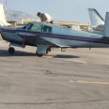Mooney Aircraft Accident Nampa, ID
-
Members Online
- toto
- Rmfriday
- Skates97
- Mooney in Oz
- PeytonM
- Matt M
- mpess
- JMo
- rpyle
- kortopates
- Schllc
- GoDemonDeacons
- hammdo
- Blaze
- Aaviationist
- Sgb318
- Planegary
- Logwes21
- Steve Dawson
- Justin Schmidt
- TravelingIA98
- MikeOH
- Brian121
- TheMooneyAnomaly
- Becca
- Marc_B
- gcb
- TCC
- Sabremech
- Rick Junkin
- jetdriven
- katzhome
- Crawfish
- caractacuspdoom
- rbmaze
- charlesual
- wiseng2
- redbaron1982
- 64U
- GMBrown


Recommended Posts